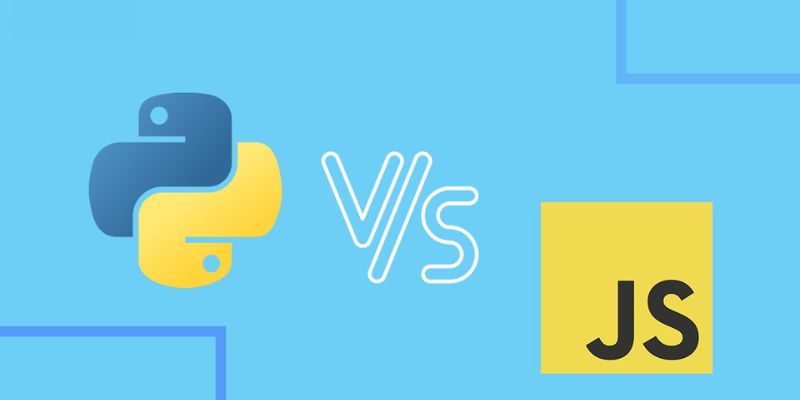In the realm of coding, two highly utilized languages are Python and Javascript. Learning Python and JavaScript will alter your life if you want to become a programmer and become fully immersed in the world of coding languages. If you want to learn about the differences between Python and JavaScript, this is the blog for you. Although these two languages are powerful and widely spoken, they differ greatly from one another. Here, we’ll go over them in more detail.
What Is Python?
Python’s strength and versatility have made it an indispensable tool in nearly all scientific applications worldwide. It is a general purpose programming language that works with several programming paradigms. It finds use in the fields of computer vision, image processing, artificial intelligence, data science, biology, and even astronomy as well as computer science education. Learn all about the python content techniques and tools with the Python Training in Chennai.
It is also used to create websites. This is the point at which we can start comparing its uses to JavaScript applications. Python is used in back-end development, which is the area of web development that works on elements of an application that users cannot view, like the server-side code.
Use of Python
Python is an easy-to-use high-level programming language that uses an interpreter. Additionally, understanding a Python program is pretty easy. As mentioned before, Python is an object-oriented programming language that supports both structured and functional programming paradigms. It can therefore be used to develop whole applications. Additionally supported are contract and logic programming; however, they need the usage of extensions.
Python is great for writing scripts and is often used for client-side programming. Python Features And Applications allow developers to create both simple and complex applications using various programming techniques.
What Is JavaScript?
JavaScript can be used to create both the front end and the back end of a web application, even though Python can be used to create the back end. The front-end of a software is the portion that the user sees and interacts with. JavaScript is utilized “behind the scenes” on every website and web application that you view or use.
Similarly, you may be utilizing JavaScript when using a mobile app since frameworks like React Native allow us to create applications that adapt to diverse mobile devices. Because it is a powerful language that provides the tools necessary to construct the components of an online program, it is commonly utilized in web development. Want to persue a career in Python? Enroll in our Python Course in Bangalore!
JavaScript vs Python: Key General Differences
JavaScript and Python are among the most popular programming languages used for various applications, including web development, data science, and automation. While both languages have similarities, they also have key differences that make them suited for different tasks. Let’s explore some of their general differences:
1. Origin and Development
- Python is an object-oriented, high-level programming language created by Guido van Rossum in 1991. It is widely known for its simplicity and readability, making it a favorite among beginners and professionals.
- JavaScript (JS) was developed by Brendan Eich while working at Netscape in 1995. It is currently standardized and maintained by ECMA International (ECMAScript). JavaScript is primarily used for web development but has expanded into backend development and other domains with frameworks like Node.js.
2. Code Readability and Maintainability
- Python is highly readable and easy to maintain, using indentation for a clean structure. Its simplicity boosts productivity. Python Training in Marathahalli helps learners master it efficiently.
- JavaScript, on the other hand, does not offer the same level of readability and maintainability due to its versatility and loose syntax. JavaScript code can become complex, especially when handling large-scale applications. However, modern frameworks and tools help improve structure and maintainability.
3. Execution and Interpretation
- Python is an interpreted language, meaning you need an interpreter to run Python code. It does not require compilation, which makes it easy to test and debug scripts.
- JavaScript is typically executed within web browsers, making it accessible without additional installations. Most modern browsers have built-in JavaScript engines, allowing direct execution of JavaScript code.
4. Typing System
- Python is a dynamically typed language, meaning you don’t need to declare variable types explicitly. The interpreter assigns the type at runtime, which enhances flexibility but can lead to runtime errors.
- JavaScript is also a dynamically typed language, allowing variable types to change during execution. However, this can introduce unexpected bugs if variables are not managed properly.
5. Use Cases and Applications
- Python is widely used for server-side scripting, machine learning, artificial intelligence, data analysis, automation, and backend development. It is the preferred language for data scientists and backend developers due to its extensive libraries and frameworks.
- JavaScript is primarily employed for client-side scripting, enabling interactivity and dynamic content on websites. With the advent of Node.js, JavaScript can also be used for backend development, making it a full-stack language.
6. Default Encoding
- Python uses ASCII encoding by default, which can be changed to support UTF-8 for handling international characters.
- JavaScript uses UTF-16 encoding by default, which is suitable for efficiently handling multilingual text and symbols.
JavaScript and Python are two distinct programming languages with their own strengths and weaknesses. JavaScript is used for front-end web development, while Python is versatile and widely used for various applications including web development, data analysis, and artificial intelligence. Understanding the key differences between Python and JavaScript can guide developers in choosing the right language for their specific project needs. Ultimately, the decision between JavaScript and Python depends on the project requirements, the developer’s familiarity with the language, and the long-term goals for the application. To learn more about Python, FITA Academy provides a top-notch Programming Languages Institutes in Bangalore that will assist you to explore more about python and its projects.
Read more: How is Java Different from Other Languages?
